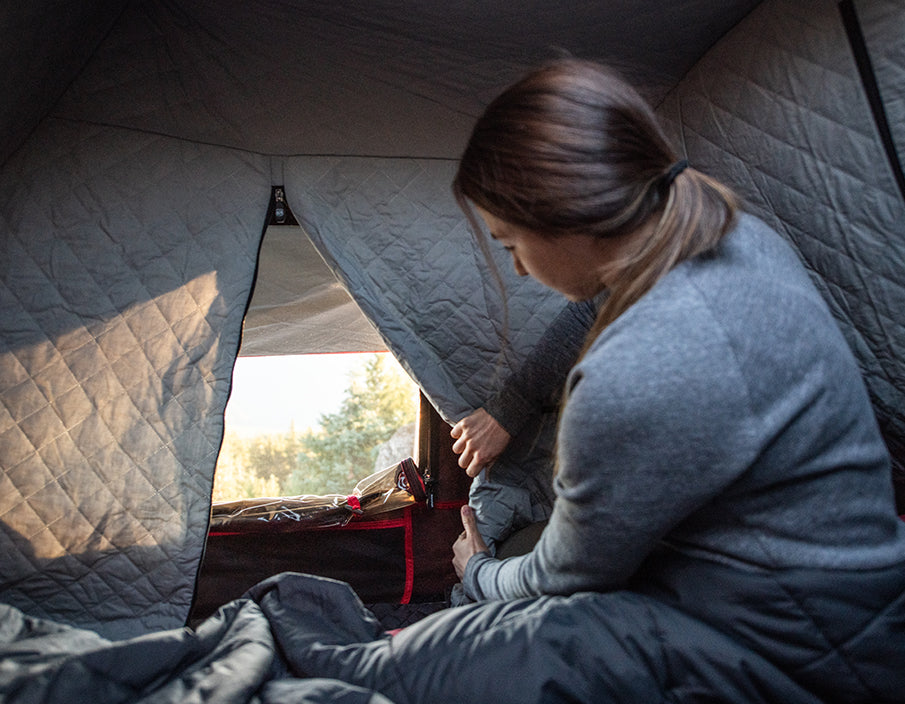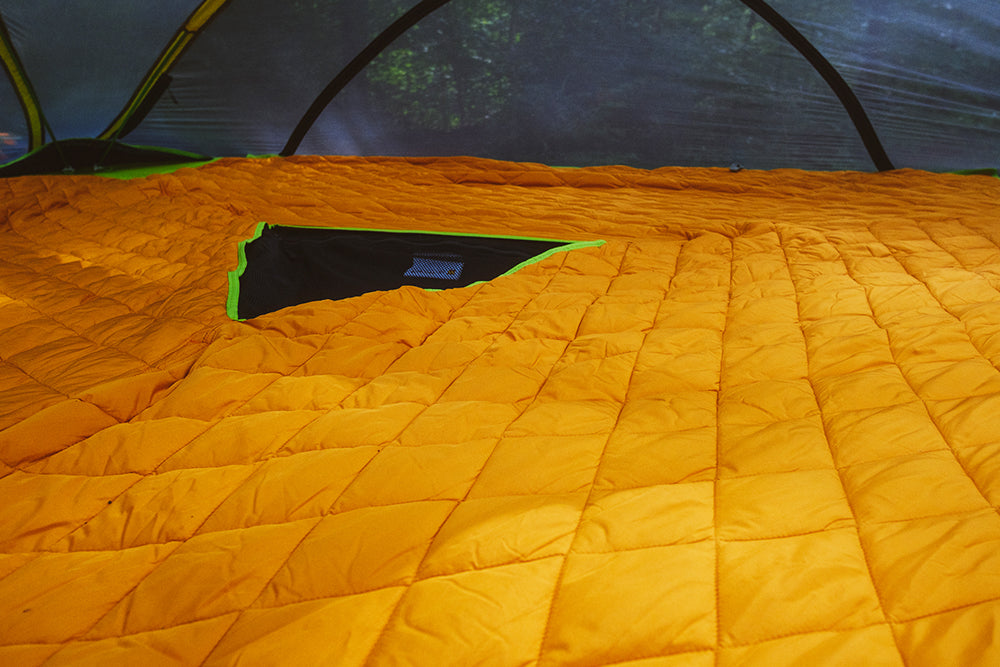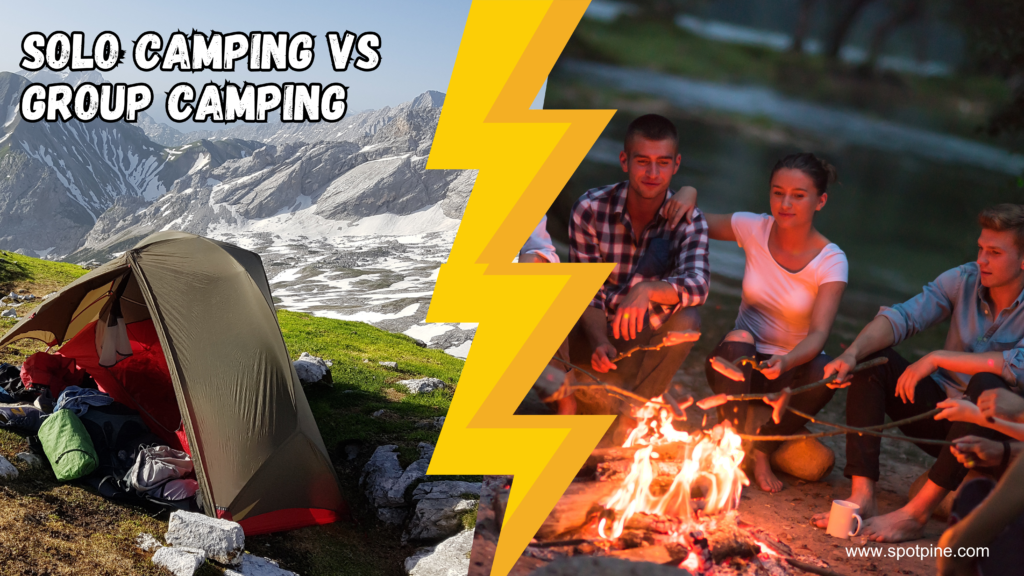To insulate a tent for winter camping, use a tent with a rainfly, add a ground tarp, and use thermal blankets. Maintain proper ventilation to prevent condensation.
Winter camping requires proper insulation to ensure warmth and comfort. Start by choosing a high-quality tent with a rainfly that extends to the ground. This extra layer helps trap heat inside the tent. Use a durable ground tarp to create a barrier between the cold ground and your tent floor.
Thermal blankets can be attached to the walls and ceiling for additional insulation. Make sure the tent is well-ventilated to avoid moisture buildup. Proper insulation techniques help maintain a comfortable temperature, allowing for a more enjoyable winter camping experience.
Choosing The Right Tent
Choosing the right tent for winter camping is crucial. A good tent keeps you warm and safe. Here, we will guide you through the process. Here you can explore the tents buying guide.
Winter-specific Tents
Winter-specific tents are designed for cold weather. These tents have thicker fabric and strong poles. They can handle snow and wind.
Many winter tents have less mesh. This keeps the heat inside. Look for a tent with a full-coverage rainfly. It adds another layer of protection.
Tent Size Considerations
Tent size is important for winter camping. A smaller tent is easier to heat. It also takes up less space in your pack.
But, don’t choose a tent that’s too small. You need room for your gear. A cramped tent can make you feel colder.
Think about how many people will use the tent. A two-person tent is good for one person and gear. A four-person tent is good for two people and gear.

Credit: ikamper.com
Insulating The Tent Floor
Winter camping can be challenging due to the cold ground. Insulating the tent floor is essential to stay warm. By adding layers between you and the cold ground, you can ensure a more comfortable camping experience. This section will cover the importance of ground tarps and foam mats in insulating the tent floor.
Ground Tarps
Using a ground tarp is the first step in insulating your tent floor. A ground tarp acts as a barrier between the ground and your tent. It helps prevent moisture from seeping into your tent. Here are the steps to use a ground tarp effectively:
-
Choose a tarp that is slightly larger than your tent’s footprint.
-
Spread the tarp on the ground before setting up your tent.
-
Ensure the tarp edges are tucked under the tent to avoid water pooling.
Ground tarps are usually made of durable materials like polyethylene. They provide an extra layer of protection against the cold ground. This small step can significantly improve your comfort during winter camping.
Foam Mats
Foam mats add another layer of insulation and comfort. They are lightweight and easy to carry. Foam mats come in various thicknesses and materials, such as closed-cell foam. Here’s how to use foam mats for insulating the tent floor:
-
Lay foam mats inside the tent before placing your sleeping bag.
-
Use multiple foam mats for extra insulation.
-
Combine foam mats with inflatable sleeping pads for maximum warmth.
Foam mats not only insulate but also provide cushioning. This makes sleeping on hard ground more comfortable. They are an inexpensive solution for keeping warm during winter camping.
Combining ground tarps and foam mats ensures maximum insulation. This keeps you warm and dry, making your winter camping experience enjoyable.
Wall And Roof Insulation
Proper wall and roof insulation is essential for winter camping. It keeps your tent warm and cozy. Effective insulation can make your camping trip enjoyable. Below are some methods to insulate your tent.
Thermal Blankets
Thermal blankets are a great choice for tent insulation. They are lightweight and easy to use. You can attach them to the walls and roof of your tent.
-
Reflect heat back into the tent
-
Block cold air from entering
-
Portable and reusable
To install, simply use duct tape or clips. Make sure the shiny side faces inward. This method ensures maximum heat retention.
Reflective Tarps
Reflective tarps are another excellent option. They provide an extra layer of insulation. These tarps are easy to set up.
-
Place the tarp over your tent
-
Secure with ropes or clips
-
Ensure it covers all sides
Reflective tarps work by reflecting heat back. They also block wind and moisture. This keeps the inside of your tent warm and dry.
|
Insulation Type |
Benefits |
Installation |
|---|---|---|
|
Thermal Blankets |
Reflects heat, lightweight, reusable |
Attach with duct tape or clips |
|
Reflective Tarps |
Blocks wind, reflects heat, waterproof |
Secure with ropes or clips |
Both options are effective. They can significantly improve your winter camping experience. Choose the one that best suits your needs.
Sealing Gaps And Vents
Winter camping can be a thrilling experience. However, keeping your tent warm is crucial. Sealing gaps and vents in your tent helps maintain heat. This process ensures you stay cozy during cold nights.
Weatherproofing Materials
Using the right materials can make a big difference. Here are some materials you can use:
-
Insulated tarps: Place them over your tent for extra warmth.
-
Weatherproof tape: Seal any small gaps and seams.
-
Foam pads: Place them under your sleeping bag for insulation.
Ventilation Strategies
Proper ventilation is essential to prevent condensation. Here are some tips:
-
Open vents partially: Allow some airflow without losing too much heat.
-
Use a tent with adjustable vents: These let you control airflow easily.
-
Keep wet gear outside: This reduces moisture inside the tent.
Sealing gaps and vents can greatly improve your winter camping experience. By using the right materials and ventilation strategies, you can stay warm and comfortable.
Using A Tent Heater
Winter camping can be thrilling, but staying warm is crucial. One way to insulate your tent is by using a tent heater. A tent heater can provide consistent warmth and make your camping experience more comfortable. Below are some tips on how to use a tent heater effectively.
Types Of Heaters
There are various types of heaters suitable for tent use. Each type has its pros and cons. Here are some common options:
-
Propane Heaters: These heaters are portable and easy to use. They run on propane gas and provide instant heat. Ensure you have enough propane for your trip.
-
Electric Heaters: These heaters require a power source. They are safe and produce no fumes. They are ideal if camping near an electrical outlet.
-
Candle Heaters: These heaters are small and use candles for heat. They are best for mild cold and small tents. Always monitor them closely.
Safety Precautions
Using a heater in your tent requires caution. Here are some safety tips:
-
Ventilation: Ensure your tent is well-ventilated. This prevents the buildup of harmful gases.
-
Stable Placement: Place the heater on a stable, flat surface. This minimizes the risk of tipping over.
-
Distance from Flammable Items: Keep the heater away from flammable materials. This includes sleeping bags and clothing.
-
Monitor Carbon Monoxide Levels: Use a carbon monoxide detector. This ensures safety in case of gas buildup.
-
Turn Off When Not Needed: Always turn off the heater when not in use. This helps prevent accidental fires.
By choosing the right heater and following safety measures, you can enjoy a warm and safe winter camping experience.
Effective Layering Inside The Tent
Winter camping demands proper insulation inside the tent. Effective layering inside the tent ensures warmth. Focus on using quality materials. Let’s explore effective layering techniques.
Sleeping Bags
Sleeping bags are crucial for winter camping. Choose a sleeping bag with a low-temperature rating. Use a sleeping bag liner for extra warmth. Place a foam pad under the sleeping bag to block ground cold.
Consider using a double sleeping bag if you camp with a partner. It traps heat more efficiently. Make sure your sleeping bag fits your body snugly. Excess space inside the bag can lead to heat loss.
Additional Blankets
Additional blankets add another layer of insulation. Use wool or fleece blankets for their thermal properties. Place a blanket inside the sleeping bag for added warmth.
Layer blankets on top of the sleeping bag. Ensure they cover your entire body. This helps trap body heat effectively. Use an emergency blanket over the sleeping bag. It reflects body heat back, maximizing warmth.
|
Item |
Material |
Purpose |
|---|---|---|
|
Sleeping Bag |
Synthetic or Down |
Primary insulation |
|
Blanket |
Wool or Fleece |
Additional warmth |
|
Foam Pad |
Closed-cell foam |
Ground insulation |
|
Sleeping Bag Liner |
Silk or Fleece |
Enhance warmth |
Effective layering inside the tent is key. Pay attention to your sleeping gear. Use quality materials for the best insulation.
Managing Moisture And Condensation
Winter camping can be fun, but dealing with moisture and condensation can be tricky. Keeping your tent dry ensures a comfortable and warm experience. Let’s dive into some useful tips and products.
Ventilation Tips
Proper ventilation is crucial to reduce condensation. Here are some simple tips:
-
Keep a small window or vent open.
-
Use a rainfly to allow airflow.
-
Position your tent away from water sources.
-
Avoid breathing directly onto the tent walls.
These tips help keep the air circulating inside the tent. This reduces moisture buildup.
Moisture-absorbing Products
There are various products available to absorb moisture. Here are some effective options:
|
Product |
Description |
|---|---|
|
Silica Gel Packs |
Place these packs around the tent to absorb moisture. |
|
Desiccant Bags |
These larger bags are great for bigger tents. |
|
Moisture Absorbing Mats |
Place these mats under sleeping bags to keep dry. |
Using these products helps keep your tent dry and comfortable. Always check and replace them as needed.

Credit: m.youtube.com
Additional Tips For Winter Comfort
Winter camping can be a thrilling adventure. Staying warm is crucial for comfort. Here are additional tips to ensure a cozy experience.
Warm Clothing
Wearing the right clothes is essential. Pack thermal underwear, wool socks, and fleece layers. These materials keep you warm and dry.
Use a good winter jacket and waterproof pants. This helps protect against wind and snow. Don’t forget a hat, gloves, and scarf. These items keep your extremities warm.
|
Clothing Item |
Material |
Purpose |
|---|---|---|
|
Thermal Underwear |
Wool or Synthetic |
Base Layer |
|
Fleece Layers |
Fleece |
Mid Layer |
|
Winter Jacket |
Down or Synthetic |
Outer Layer |
Hot Water Bottles
A hot water bottle is a great heat source. Fill it with boiling water before bed. Place it in your sleeping bag to stay warm.
Use a high-quality, leak-proof bottle to avoid accidents. Wrap it in a sock or cloth for comfort. This method provides hours of warmth.
Hot water bottles are compact and easy to pack. They are a simple way to boost warmth.
-
Fill bottle with hot water
-
Seal tightly to prevent leaks
-
Place in sleeping bag before bed

Credit: www.tentsile.com
Mastering tent insulation can transform your winter camping experience. Stay warm, cozy, and safe with these practical tips. Proper preparation ensures comfort even in the harshest conditions. Enjoy the beauty of winter without sacrificing warmth. Happy camping!
FAQs:
How Do I Insulate My Tent For Winter?
To insulate your tent, use foam mats or reflective blankets. Cover the tent floor and walls. Use a tent heater for warmth.
What Materials Are Best For Tent Insulation?
Foam mats, reflective blankets, and thermal sleeping bags are excellent for tent insulation. These materials trap heat effectively.
Can I Use A Regular Tent For Winter Camping?
Yes, but you’ll need extra insulation. Use foam mats, reflective blankets, and a tent heater for added warmth.
How Do I Keep My Tent Warm Without Electricity?
Use thermal blankets, foam mats, and a propane heater. Proper ventilation is also essential to prevent condensation.


